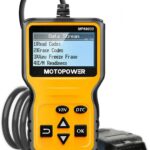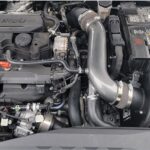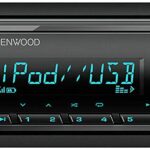Among the features of the latest diesel-powered vehicles on the market, they are equipped with diesel particulate filters. These filters are crucial in ensuring vehicles will perform optimally over the years. And as a vehicle owner, if you tend to overlook proper care and maintenance of such filters, it can result in issues that’ll steadily worsen and put your vehicle on the sidelines.
What Exactly Is A Diesel Particulate Filter?

Most diesel vehicles manufactured after 2008 and all vehicles with diesel engines in 2011 are equipped with a diesel particulate filter. Generally, it plays an important role in minimizing the number of harmful particles released from diesel vehicles and typically utilizes a ceramic material substrate that forms into a honeycomb structure. If you want to check out the available choices, you might find the right one at https://www.dpfpartsdirect.com.
The main role of the filter in diesel vehicles is to minimize the number of particle emissions during operation. However, there may be times when you need to routinely perform the passive regeneration process, which involves the burning off of any excessive buildup of particles. The process will require you to drive your car at high speeds, ideally up to 50 mph or higher, for brief periods.
Suppose you currently own a diesel-powered vehicle or looking into buying one. In such a case, understanding what a diesel particulate filter is and how it works can be to your advantage. That said, here are things you need to know and be familiar with.
1. Potential Causes Of Blockage
An orange light will appear on your dashboard when soot accumulates and may be blocking the filter. In most vehicles, the warning light looks similar to a miniature box with dots in the middle.
Generally, there are various reasons why the DPF of your vehicle could get blocked. The main culprit is brief trips at low speeds. Sadly, this cannot be avoided in urban driving. And so, as much as possible, it’s best to go for a petrol-powered vehicle in such scenarios if you don’t want the hassle the DPF brings.
Poor servicing is another source of clogging. Unable to schedule routine servicing for your diesel vehicle can shorten the lifespan of the filter. Even the oil you’ll use should be taken into consideration since some tend to contain additives that can make the filters prone to blockage. Note that a well-maintained filter can last for thousands of miles of driving
Other causes of blockage also include performance modifications that impair or damage the DPF, utilizing low-quality fuel, and frequently running the vehicle on low fuel.
2. Proper Maintenance Of A DPF

If you want to ensure the filter in your diesel vehicle stays optimum, make it a priority to initiate the regeneration process once you notice the warning light on the dashboard. Generally, the regeneration process comes in two forms – active and passive.
In the passive mode of regeneration, you can drive your vehicle at a steady speed for a few minutes, ideally on the highway or on lengthy trips if possible. While driving in such conditions, the temperature of the exhaust reaches a high temperature that it’s capable of burning away the buildup of soot in the filter. The only drawback is that not all can do this activity regularly.
The active mode of regeneration serves as another option of regeneration that occurs within the vehicle itself. During the process, extra fuel is injected once a filter reaches a specific limit. As a result, the temperature of the exhaust increases drastically to burn the soot away.
A brief trip, however, isn’t enough to fully clean the filter. Even if the active process occurs, you’ll end up seeing the warning light. If you want to complete the active regeneration process, you need to drive up to 10 minutes, reaching the speed of 40 mph or higher.
3. Ways To Lengthen The Cycle Of A DPF
In most diesel vehicles, they are equipped with a DPF capable of lasting for many miles. In most cases, the filter among vehicles in good shape and used with care can last up to 100,000 miles or even longer.
But to help you prolong the lifespan of your vehicle’s filter, here are a few ways to consider:
- Check the recommendations by the manufacturer of your vehicle when performing active regeneration.
- Minimize idling as much as possible since your vehicle still produces particulates at low engine speeds. When you allow your vehicle to idle while parked, it can cause filter blockage quickly because DPF regeneration cannot occur while your vehicle is idle.
- Use the proper oil because DPF requires low sulfated ash, phosphorus, and sulfur (SAPS) engine oils to help reduce filter clogging. Before changing your engine oil, carefully inspect the packaging for ‘low SAPS’ or indicate that it fits vehicles with DPF.
- Make it a priority to schedule servicing and maintenance for your vehicle as one of the ways to keep the DPF in optimal shape. Some of the typical issues that can increase the amount of particulate buildup include problems with air intake, fuel consumption, and leaking of interior components, to name a few.
4. Replacement Of A Diesel Particulate Filter
If you need to replace the filter, you should be ready for its costly price range. A brand-new replacement can cost thousands of dollars. When a vehicle starts to deteriorate over time, so will the price. Replacing the filter might fetch a high price, even higher than the current value of your value. Sadly, if your vehicle has high mileage, you have no other choice but to replace the filter with a brand-new one.
Conclusion
The DPF plays an important role in the overall functionality of diesel-powered vehicles. With this in mind, understanding everything there is to know about diesel particulate filters is critical to ensuring your vehicle stays in optimum shape throughout the years you’ll use it.








